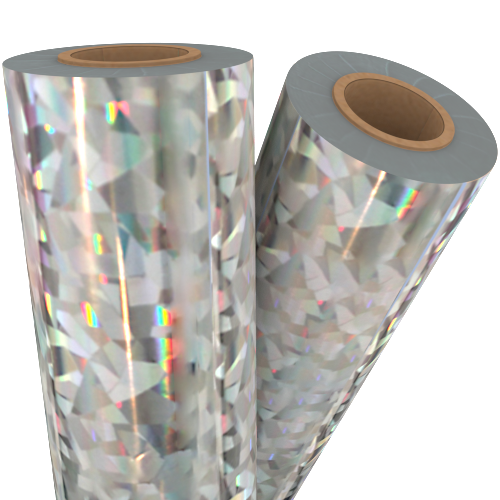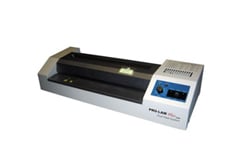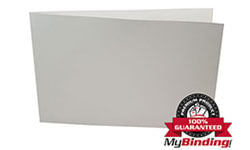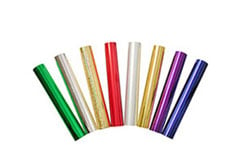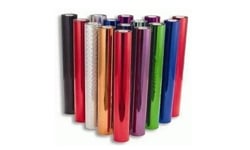Cracked Ice Silver Holographic 8" x 100' Laminating / Toner Fusing Foil
67.49
NewCondition
InStock
Cracked Ice Silver Holographic 8" x 100' Laminating / Toner Fusing Foil
SWIPE FOR MORE IMAGES
- 0
- 1
| Product Name | Item Number | Price | Qty | ||
|---|---|---|---|---|---|
| Cracked Ice Silver Holographic 12" x 100' Laminating / Toner Fusing Foil | FF-SP-170-12 | $100.99
|
|||
| Cracked Ice Silver Holographic 24" x 500' Laminating / Toner Fusing Foil | FF-SP-170-24 | $429.59
|
Product Description
Finally you can produce impressive and stylish foil imprinting without the trouble and expense of foil die creation with Cracked Ice Silver Holographic 8" x 100' Laminating Foil. Imagine it foil stamped business cards, invitations, greetings cards, certificates, the possibilities are endless. Anything you can feed through a laser printer can be imprinted with the incredible new Foil Laminating process. All you need is a laser printer (toner based printer), and a substantial pouch laminator such as the GBC H600, H700, or the Speedy Lam Pouch Laminator and you can create flawless foil imprints on anything from event tickets, to formal wedding invitations. Imagine the time saved if you could provide a foil stamped proof to your design client in minutes. With the foil laminating process you can. Contact MyBinding.com today to discover how this revolutionary process is making foil imprinting easier and more economical to incorporate into your design process.
Please note: Toner reactive foil does not work with all sleeking, foiling, or laminating machines. Check your machine user manual for compatible supplies or contact us for help.
Product Details
- Type: Holographic Laminating Foil
- Style/Color: Cracked Ice Silver
- Width: 8"
- Roll Length: 100'
- Core Size: 1/2"
Demonstration Video
How to Foil Laminate
Transcript:
This is How to Foil Laminate!
For those who are new to this, we’ll first go over the basic steps. We also highly encourage everyone to view our written knowledge base article.
Here’s the supplies you’ll need: your laminating foil, some scissors, a project printed with a laser printer, a carrier, and finally a pouch laminator.
First, open your carrier and place your project inside. Now take your foil and cut it appropriately to cover the correct portion of your project.
Take that piece and rest it in its position.
If you have other colors and places to fill, continue to do so.
... Read More
For those who are new to this, we’ll first go over the basic steps. We also highly encourage everyone to view our written knowledge base article.
Here’s the supplies you’ll need: your laminating foil, some scissors, a project printed with a laser printer, a carrier, and finally a pouch laminator.
First, open your carrier and place your project inside. Now take your foil and cut it appropriately to cover the correct portion of your project.
Take that piece and rest it in its position.
If you have other colors and places to fill, continue to do so.
... Read More
This is How to Foil Laminate!
For those who are new to this, we’ll first go over the basic steps. We also highly encourage everyone to view our written knowledge base article.
Here’s the supplies you’ll need: your laminating foil, some scissors, a project printed with a laser printer, a carrier, and finally a pouch laminator.
First, open your carrier and place your project inside. Now take your foil and cut it appropriately to cover the correct portion of your project.
Take that piece and rest it in its position.
If you have other colors and places to fill, continue to do so.
It’s important to cover the printed portions of your project that you do not want to foil. If you don’t then some of the print will transfer onto your carrier and make a mess on other later projects.
Now insert the carrier into the laminator. It’s best to either hold or get something to keep the project flat so that the foil does not fall from within the carrier.
When it’s done, remove the carrier from the back, open it up and proceed to peal off the foil and uncover your project.
Now chances are you’ll see spots in your foiled project, which means we have to go over steps for quality control.
I wish there was an easy one-and-done way to get the best quality—but there are so many factors in play that it’s going to take some trial and error on your part.
So first, when printing you have to print on a laser printer, no other printers will work. The foil adheres best with solid black projects—if you have colors, convert them to black or don’t laminate them. This also means no gradients or opaqueness. And it’s best to use vector based images—texts are vector based, and programs like Adobe Illustrator create vector based art.
The smoother the paper, the better your results. And as long as you can print it in your printer you will be able to foil it.
For choosing a laminator, it should have temperature controls for 10 mil, but preferable one that you can set the actual temperature manually to 300 degrees fahrenheit or higher. Slow down your laminator, too. And make sure the throat of your laminator is large enough to fit your projects!
When you choose not to foil part of your project, cover it with paper to avoid ink transferring onto your carrier and ruining future projects. And we’ve found that for some reason, some foils just adhere better than others.
Not every printer toner provides the best results. Some toners adhere better than others, and printers with a high dots per inch(DPI) will provide smoother edges and nicer results.
For serious professional foiling, check out foil fusers and foil stamping machines—these are expensive, commercial usage machines. Follow this information and you should be able to achieve some great looking foil laminated projects!
For those who are new to this, we’ll first go over the basic steps. We also highly encourage everyone to view our written knowledge base article.
Here’s the supplies you’ll need: your laminating foil, some scissors, a project printed with a laser printer, a carrier, and finally a pouch laminator.
First, open your carrier and place your project inside. Now take your foil and cut it appropriately to cover the correct portion of your project.
Take that piece and rest it in its position.
If you have other colors and places to fill, continue to do so.
It’s important to cover the printed portions of your project that you do not want to foil. If you don’t then some of the print will transfer onto your carrier and make a mess on other later projects.
Now insert the carrier into the laminator. It’s best to either hold or get something to keep the project flat so that the foil does not fall from within the carrier.
When it’s done, remove the carrier from the back, open it up and proceed to peal off the foil and uncover your project.
Now chances are you’ll see spots in your foiled project, which means we have to go over steps for quality control.
I wish there was an easy one-and-done way to get the best quality—but there are so many factors in play that it’s going to take some trial and error on your part.
So first, when printing you have to print on a laser printer, no other printers will work. The foil adheres best with solid black projects—if you have colors, convert them to black or don’t laminate them. This also means no gradients or opaqueness. And it’s best to use vector based images—texts are vector based, and programs like Adobe Illustrator create vector based art.
The smoother the paper, the better your results. And as long as you can print it in your printer you will be able to foil it.
For choosing a laminator, it should have temperature controls for 10 mil, but preferable one that you can set the actual temperature manually to 300 degrees fahrenheit or higher. Slow down your laminator, too. And make sure the throat of your laminator is large enough to fit your projects!
When you choose not to foil part of your project, cover it with paper to avoid ink transferring onto your carrier and ruining future projects. And we’ve found that for some reason, some foils just adhere better than others.
Not every printer toner provides the best results. Some toners adhere better than others, and printers with a high dots per inch(DPI) will provide smoother edges and nicer results.
For serious professional foiling, check out foil fusers and foil stamping machines—these are expensive, commercial usage machines. Follow this information and you should be able to achieve some great looking foil laminated projects!


